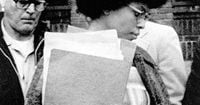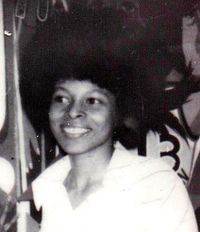Assata Shakur, a name that has echoed through decades of struggle, controversy, and inspiration, passed away in Havana, Cuba, on September 26, 2025, at the age of 78. Her death, confirmed by Cuban authorities and reported by multiple outlets including Cubaminrex and Black Press USA, marks the end of a life that was as much a symbol as it was a story of personal and political transformation.
Born JoAnne Byron—later known as JoAnne Chesimard—on July 16, 1947, in New York City, Shakur’s early years unfolded against the backdrop of the Civil Rights, Black Power, and Anti-War movements. According to Globetrotter and Peoples Dispatch, her time at Borough of Manhattan Community College and City College of New York was marked by activism and a growing political consciousness. She soon became a prominent organizer and, eventually, a leading member of the Black Panther Party (BPP) in Harlem.
For many, the BPP was mischaracterized as a violent group, but as Peoples Dispatch points out, it was deeply rooted in community work—running free breakfast programs, health clinics, and standing up against police brutality. Shakur and her peers saw the party as a vehicle for political empowerment and self-defense. But the BPP’s prominence also made it a target for state repression.
As the crackdown intensified, Shakur and others joined the Black Liberation Army (BLA), a clandestine group that advocated armed resistance against the U.S. government, which they viewed as inherently racist and oppressive. This shift, as described by Peoples Dispatch, was a direct response to the increasing violence and surveillance directed at Black activists.
Central to Shakur’s story is her relentless targeting by the FBI’s Counter-Intelligence Program, or COINTELPRO. As detailed by her attorney Lennox Hinds and corroborated by Peoples Dispatch, COINTELPRO was a covert operation from the mid-1950s through the early 1970s, designed to “expose, disrupt, misdirect, discredit, or otherwise neutralize” groups like the BPP and other Black revolutionary organizations. Tactics ranged from psychological warfare and infiltration to the fabrication of evidence and provocation of violence—methods that would eventually be exposed in 1971 when activists broke into an FBI office and released damning documents to the press.
Shakur’s personal ordeal reached a dramatic turning point on May 2, 1973. Stopped on the New Jersey Turnpike with two fellow BLA members, a shootout ensued, resulting in the deaths of a state trooper and her comrade Zayd Malik Shakur. Assata herself was gravely wounded. Despite forensic testimony that her injuries made it impossible for her to have fired a weapon, she was convicted of murder in 1977, in what many—including supporters and legal experts—described as a political witch-hunt. “I am a 20th-century escaped slave,” Shakur famously declared. “Because the legal system in the United States is vicious, racist, and unjust. And I had no hope for a fair trial.”
Her conviction did not end her story. In 1979, after two years in prison, Shakur escaped with the help of the BLA. By 1984, she had been granted political asylum in Cuba, where she would remain for the rest of her life. According to Peoples Dispatch, Cuba’s unwavering protection of Shakur, despite decades of U.S. pressure and threats, was seen as a testament to its anti-imperialist and anti-racist principles. Cuban officials, including Fidel Castro, repeatedly defended her as a “true political prisoner” and a victim of U.S. repression.
The U.S. government, for its part, never relented. Shakur was placed on the FBI’s Most Wanted Terrorist list in 2013, and the bounty on her head was increased to $2 million. Billboards appeared in New Jersey, and she became a symbol of both defiance and division. Yet, as Peoples Dispatch notes, the U.S. harbored known anti-Cuban terrorists while relentlessly pursuing Shakur, a contrast that many saw as stark hypocrisy.
For those who admired her, Shakur was far more than a fugitive. “She was our warrior queen mother, our sister comrade, our mama,” said Thandisizwe Chimurenga on Black Press USA’s Let It Be Known morning news show. “She fought for us. She sacrificed for us. And her autobiography, infused with poetry, showed us the beauty of a woman the state called a terrorist. She was a beautiful soul who often said we must be weapons of mass construction, creating more beauty in the world because the people running it are destroying it.”
Her words, too, have lived on. “It is our duty to fight for our freedom. We must love each other and support each other. We have nothing to lose but our chains,” Shakur wrote—a phrase that became a rallying cry during the Ferguson protests and the Black Lives Matter movement, as reported by Black Press USA. Her legacy as a poet, mother, and inspiration to generations of activists is undeniable.
Reactions to her death have underscored the enduring divide in how she is remembered. While some, including government officials and mainstream media, continued to label her a terrorist and fugitive, others saw her as a hero who was unfairly targeted for her political beliefs and her unwavering commitment to Black liberation. “Love. Love of Black people. Sacrifice, commitment, and beauty,” Chimurenga reflected. “That is who she was.”
For Cuba, her presence was more than political—it was a matter of principle. At a gathering in New York, Cuban Foreign Minister Bruno Rodriguez Parrilla summed up the sentiment simply: “We fulfilled our duty.”
Shakur’s life and death invite reflection on the nature of resistance, the cost of dissent, and the power of solidarity. Her story, shaped by the turbulence of her times and the choices of those in power, remains a beacon for those who seek justice against the odds. Her vision—of a world free from racism, imperialism, and exploitation—continues to inspire, challenge, and provoke. As her words echo through protests and poetry alike, the struggle for liberation she embodied remains unfinished, but undeniably changed by her presence.


